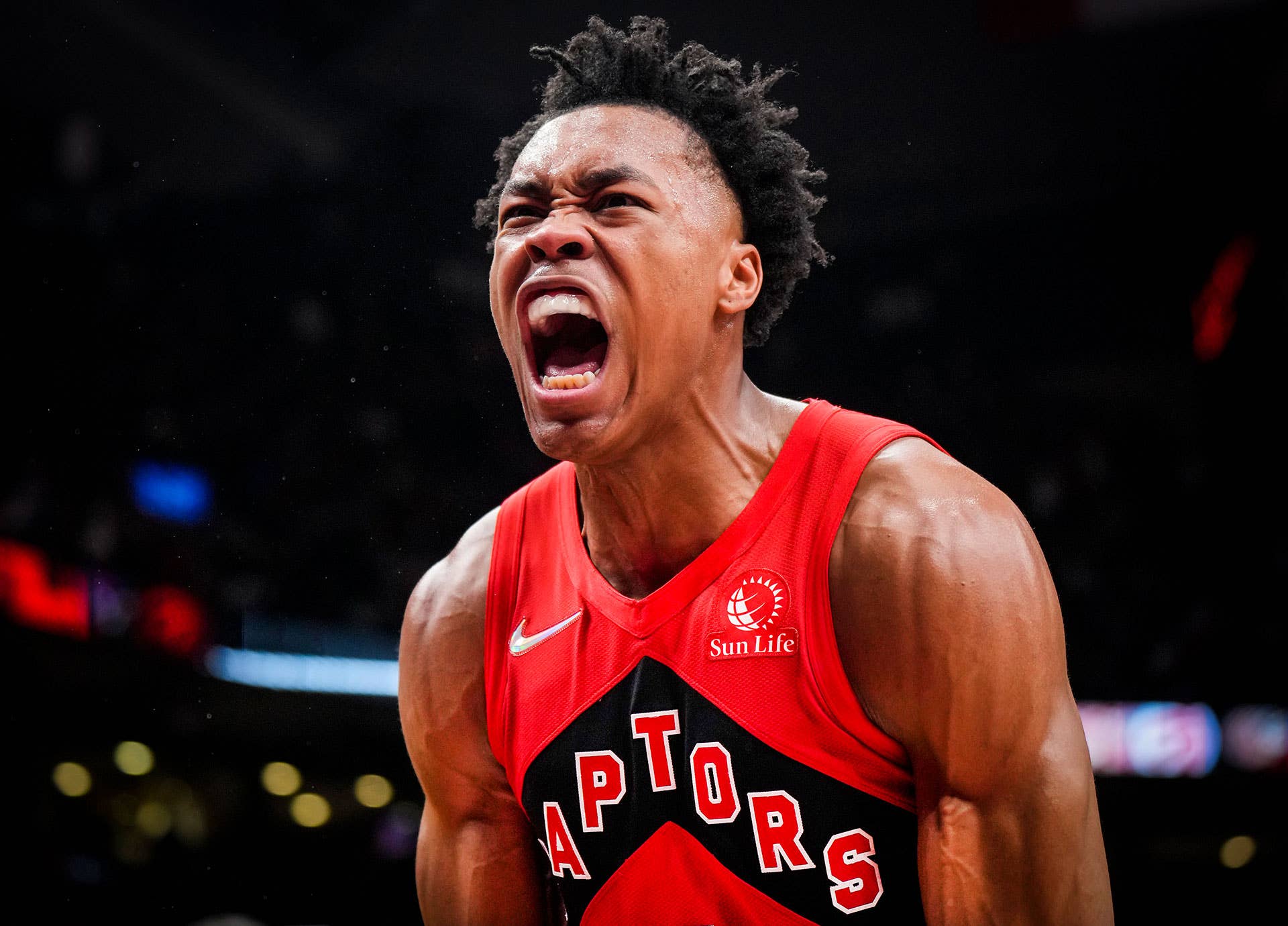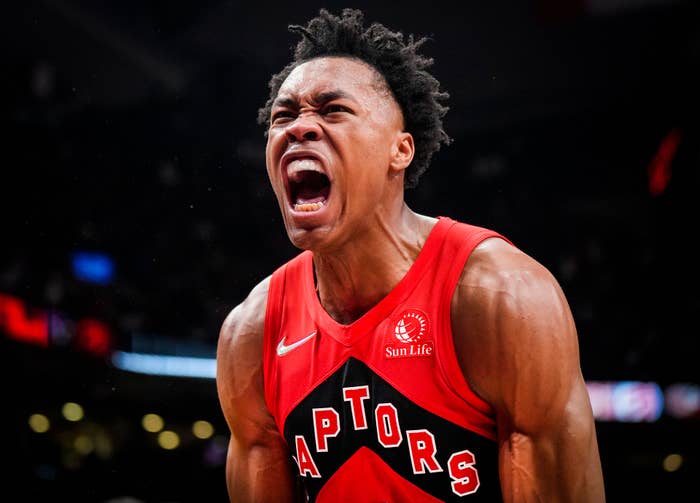
In what feels like no time at all, the future of the NBA is staring at us right in the face.
Scottie Barnes acts like the cornerstone of the Raptors. Jalen Green tore it up on the back end of the season at Houston. Cade Cunningham has a license to do what he pleases at Detroit. Miles Bridges can play both sides of the ball for Charlotte. And Josh Giddey throws rocket passes, drops floaters, and has positively changed the way Oklahoma plays.
The next crest of modern NBA players are emerging at light speed. They can hoop. They are armed with length, athleticism, speed, high IQ, defensive chops, long-range shooting. It sounds much the same as what we’re used to seeing in the NBA. But this next generation feels different. At some point, the next wave of young talent will take over from LeBron, Chris Paul, Steph Curry. It just so happens that the time could be now.
So what does the next NBA phenom look like and how will it shape the game?
Chris Walder, host of The Walder Sportscast and former sports writer for TheScoreand Bleacher Report, recalls the start of the 2021-22 season when the Raptors picked Scottie Barnes over the much hyped and predicted Jalen Suggs—the latter was thought to be favoured in the post-Lowry era with defensive chops, good range, and smaller build.
Barnes came into his rookie year with an offensive weakness, but had a lot of other traits on his side: athleticism, length, multiple range of skills, size, and the ability to do a lot of different things when he’s on the floor. In his second game he broke out for a 25 point 13 rebound night with one triple. His best game was against the Lakers dropping 31 points 17 rebounds and six assists. During his first 20 games he went 5-from-18 from the arc. But the next three games following that, he went 10-from-21.
“I thought it was going to take a long time for him to develop a jumper. This is exactly what Masai Ujiri wanted for this roster. Someone who can run the point but can also defend the center position if need be. Scottie Barnes brought that to the table,” Walder said. “When it was shown that he can bring the ball up the floor and everyone around him was the same size as him it became apparent that not only is this just the future of the Toronto Raptors—how they’re going to run their offense—it’s the future of the NBA.”
A glimpse of the future might arrive this week at the 2022 NBA Draft: Dyson Daniels, a 6-foot-7 point guard who is long with a developing shot. Jordan Lawley—an NBA trainer who’s worked with him, Klay Thompson, Julius Randle and Zach LaVine—says the new breed of basketball talent will most likely be bigger and longer: think Miles Bridges and Giannis.
“It’s hard to find a LeBron James because there’s so much talent now. It’s difficult for one player to single-handedly carry a team to the playoffs.”
If you look at the Top 10 projected draft picks on most draft boards for this week, seven of them are 6-foot-7 and above—most of them are forwards and guards.
“Dyson didn’t have the best shooting year last year but his mechanics are so pure,” Lawley said. “We can teach them how to shoot within one or two seasons in the league. So now there is a possibility for Dyson to make a huge leap.”
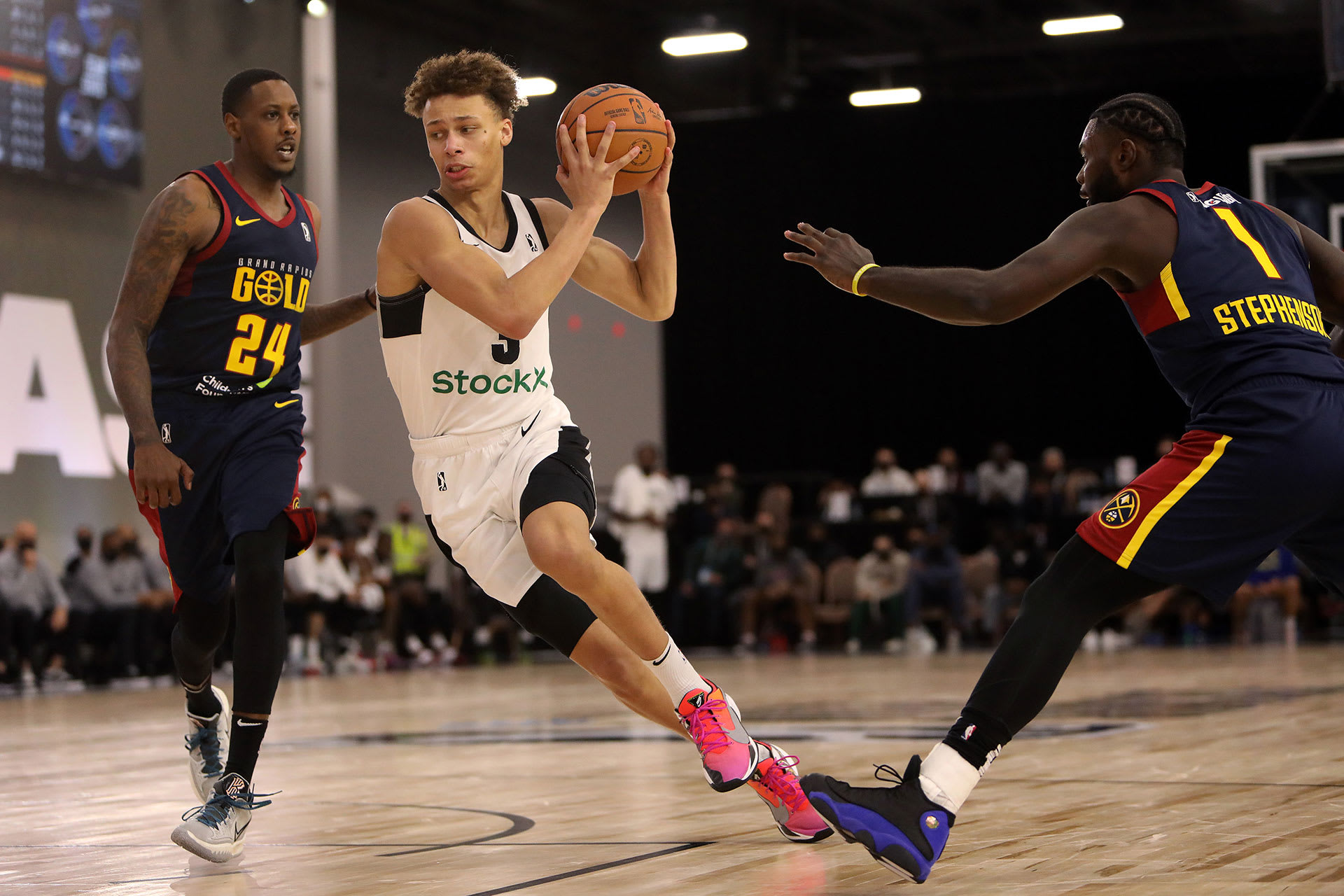
Lawley notes that teaching a player to defend is harder than teaching a player how to discover his shot. He believes that defending is something that is bred. It’s borne from someone’s drive and own appetite to selflessly shut down someone else’s game.
“A lot of times that’s out of the hands of a coach. It completely falls into the lap of the player’s desire. There’s a lot of people that don’t have that dog mentality bred into them. It’s borderline impossible to teach,” he said.
With the NBA now quicker, with more threes, tighter defense, and a reliance on scoring off turnovers, Lawley has seen the mid-range shot come back. It’s the kill spot, he says. He tells me five years ago no one was shooting the mid-range shot. Offenses were either hitting threes or finishing at the rim. Even eight years ago when Lawley first started training NBA players, he was told “don’t ever teach someone how to do a floater.”
“I always thought it was a great touch shot. It’s the next level finish that everyone has,” he said. “Fast forward to now and everyone has the ability to shoot floaters—bigs, the point guards, the wings. It’s one of the shots that is positionless. It’s opening up areas for people to be able to score in different facets.”
Theodore Chan just spent three weeks in Europe seeking professional basketball talent at all levels. He consults as a scout for teams like Adelaide 36ers and the Ottawa BlackJacks and says it’s hard to define what common skill will be highly sought after as basketball at the highest level evolves.
“To play modern ball you need to be a specialist in three point shooting or defense or versatile—or you can be both,” he said. “There still needs to be balance. You can’t have five Scottie Barnes type players on one team. Still need to have players at different heights. You still need a better player maker than Scottie Barnes to be able to run your offense.”
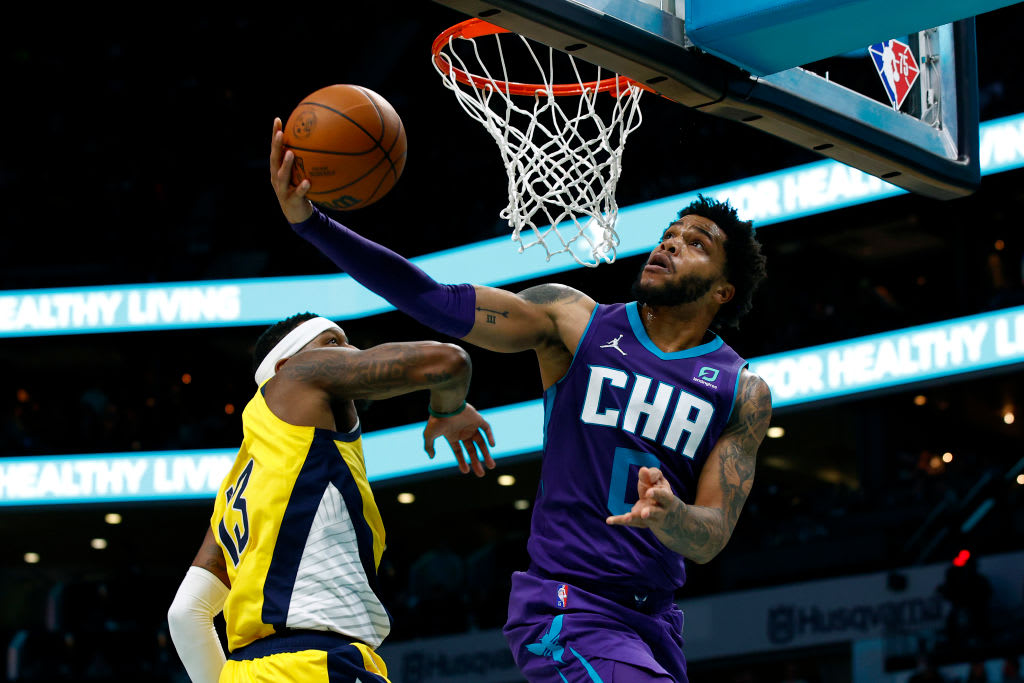
When elements of the game change, it forces sport scientists like Lauren Buschmann to tweak training programs. She works with the women’s national basketball team at the Canadian Sport Institute Ontario and has seen the game shift as players move across multiple positions.
“We are seeing fours and fives out on the perimeter more where they have to be very agile. They have to be able to keep somebody in front of them when they’re defending. So that plays into how they need to be trained,” she said. “There are still going to be traditional centers who may not be coming out to shoot threes, or defending around the perimeter. It’s becoming less and less. It’s more trying to fit what that team style of play is and what the game is currently.”
The transition for players making that leap and taking on a non-traditional role—shooting more threes or defending an area on the court—Buschmann says there needs to be a familiarity that is built up in training before trialing it in a game. That part can take time.
“They are building strength in a variety of positions so that if they are put in that scenario on court it’s not going to be the first time they’re ever doing that movement,” she said. “Recovery is going to be critical. If you can nail the recovery aspect to allow the athlete to tap into their potential it seems like the natural area to focus time and attention.”
For his first eight years, Celtics center Al Horford didn’t attempt a three-point shot. Then he started averaging three shots a game.
“It just goes to show the evolution of the game,” said NBA skills coach and basketball clinician DJ Sackmann. “He didn’t grow up shooting threes. Now there’s a generation of players built like him working on the long shot from a young age.”
Sackmann sees the game continuing to funnel into a majority of players being able to shoot threes at a high level and the floor will continue to be spaced like it is.
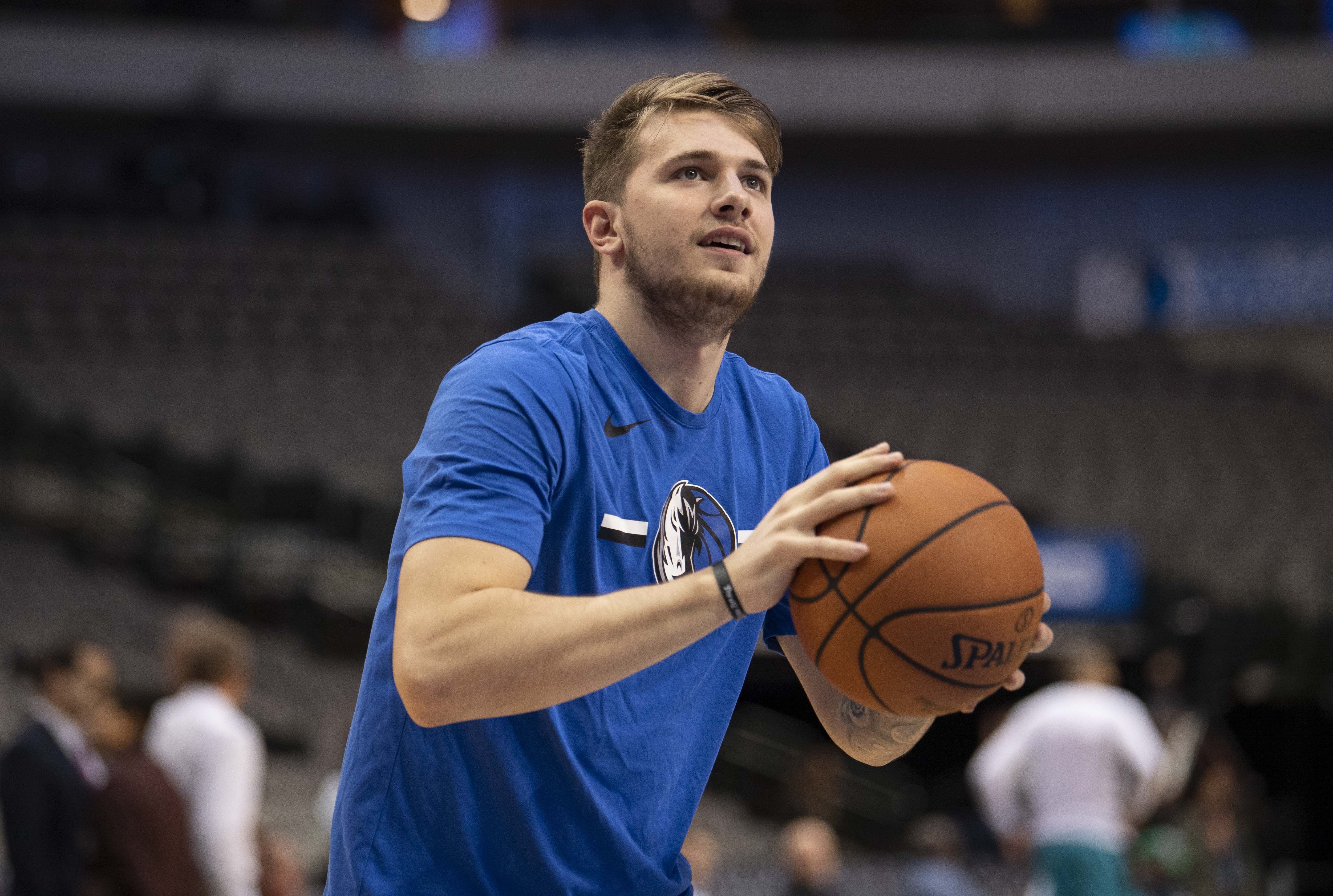
This season LaMelo Ball and Luka Doncic stood out for Sackmann in just how difficult they are to stop in the pick and rolls because of their size. “They just see over everybody,” he said. They are taller, longer, and shoot the three ball. He believes, because of their impact, it’s going to be more the ideal lead guard type in the NBA.
In his work with high school kids, Sackmann focuses on building as much skill as possible around fundamentals like ball handling, footwork, shooting. It’s all done at a high level. Putting them in positions is an afterthought. His mantra: “The more skilled a player can become at a young age the better you’ll be in your eventual position.”
Sackmann says, the next decade will continue to see players come into the NBA and shoot from deep, with also that hybrid player—three-pointer and mid-range shooter, like Tatum and Jaylen Brown. Even though Steph Curry is 34 and at the end of his career, he’s inspired a generation that is coming into the league now. They’ve watched him change the game.
“It’s hard to find a LeBron James because there’s so much talent now. It’s difficult for one player to single-handedly carry a team to the playoffs,” said Sackmann. “We’re going to see more team-oriented basketball play out like the Warriors, the Bucks. And that’s going to be exciting.”

